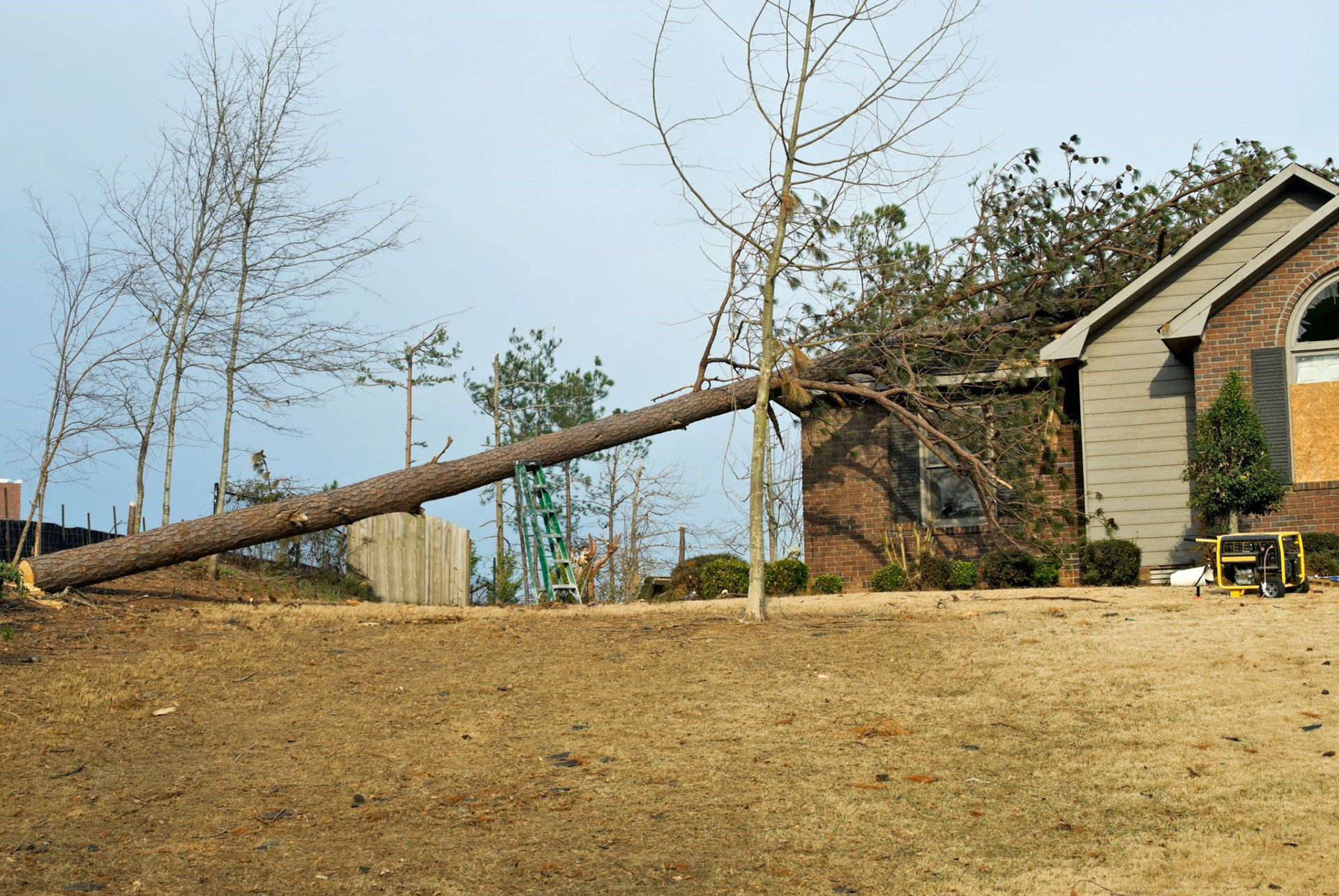
When deciding on a home, one with a big yard with lots of plants and big, old trees will often tip the scales in its favor for buyers. Trees look beautiful and majestic while providing a place to hang a swing for the kids, lots of shade, and maybe even sweet-smelling flowers and fruit.
Old trees bear the brunt of strong winds, protecting your home and your roof from any wind damage. They also protect the shingles on your roof from UV rays during the day. UV rays harm the lifespan of your shingles, so the fewer rays that are directly absorbed, the better it is for your roof. The shade that old trees provide to the roof also means less absorption of heat through the roof, which reduces your overall energy costs for cooling the house.
While trees have some advantages, they can be a potential threat to your roof and shingles. Please bear in mind that it’s always best to get your tree examined by an arborist before you make any decisions about it. If the branches need some trimming or pruning, call an expert to do it for you.
Potential Tree Damage Costs
- A sick tree is likely to be unstable, with roots that aren’t as firm in the ground as they should be. If this is the case, a really strong gust of wind could knock the tree over, causing it to fall onto the roof. This could cause extensive roof damage.
- Even if an entire tree doesn’t fall, if a few branches are broken and fall onto the roof, they could damage the shingles. Branches that brush against the roof often damage the shingles if a strong enough wind blows.
- The leaves, twigs, fruits, and flowers that fall from the tree may create a mess on your roof and may even clog the drains.
- Though shade is great in the summer, there can be too much of a good thing. If an area never gets any sun, especially after a rain shower, mold and algae are likely to grow there, and the shingles on the roof can rot.
- Trees can give animals and insects access to your roof and eventually your house. It’s best to trim and prune tree branches so that they aren’t hovering over the roof.
Tips to Prevent Roof Damage
Trim It
The best place to start is to give the tree a nice trimming. It’s a good idea to call an arborist because they know exactly how much of the tree to trim without damaging the tree. Removing more than 25% of the tree could lead to the tree dying and falling over, causing the problem you were trying to avoid all along.
Prune the Young Ones
Pruning trees while they are still growing is a great way to encourage their growth in a certain direction and to ensure that they are strong and stable.
Operation Clean-up
Cleaning up after your trees should be something that you do regularly. Leaves, twigs, flowers, and nuts fall underneath the tree. This debris can clog up drainage pipes, which could cause a lot of damage during a storm. Clean the debris at least every couple of months, especially if you have coniferous trees like pines.
Cut Down Unstable or Sick Trees
Get your tree checked out by an arborist before you decide to remove it, but if a tree is sick, dying, or unstable, it’s best to get rid of it altogether. It is liable to fall in a storm and cause roof damage.
There are many signs of a tree’s health:
- the trunk is splitting
- the branches have fungus growing on them
- the leaves are discolored
- the tree is leaning in one direction
- the bark is peeling off
Clean the Roof, Downspouts, & Gutters
When weather reports indicate a serious storm is about to hit, check your roof, gutters, and downspouts for any potential debris that could choke pipes and cause problems.
Conclusion
These simple tips can help you avoid roof damage caused by trees. Even the most ferocious of storms can be withstood when we take the right precautions.
If your roof has already been damaged and needs repairs, you are in luck! Unified Roofing can take care of any roof damage, no matter how minimal or extensive. Get in touch and set up a time for a consultation with our roofing experts today!


